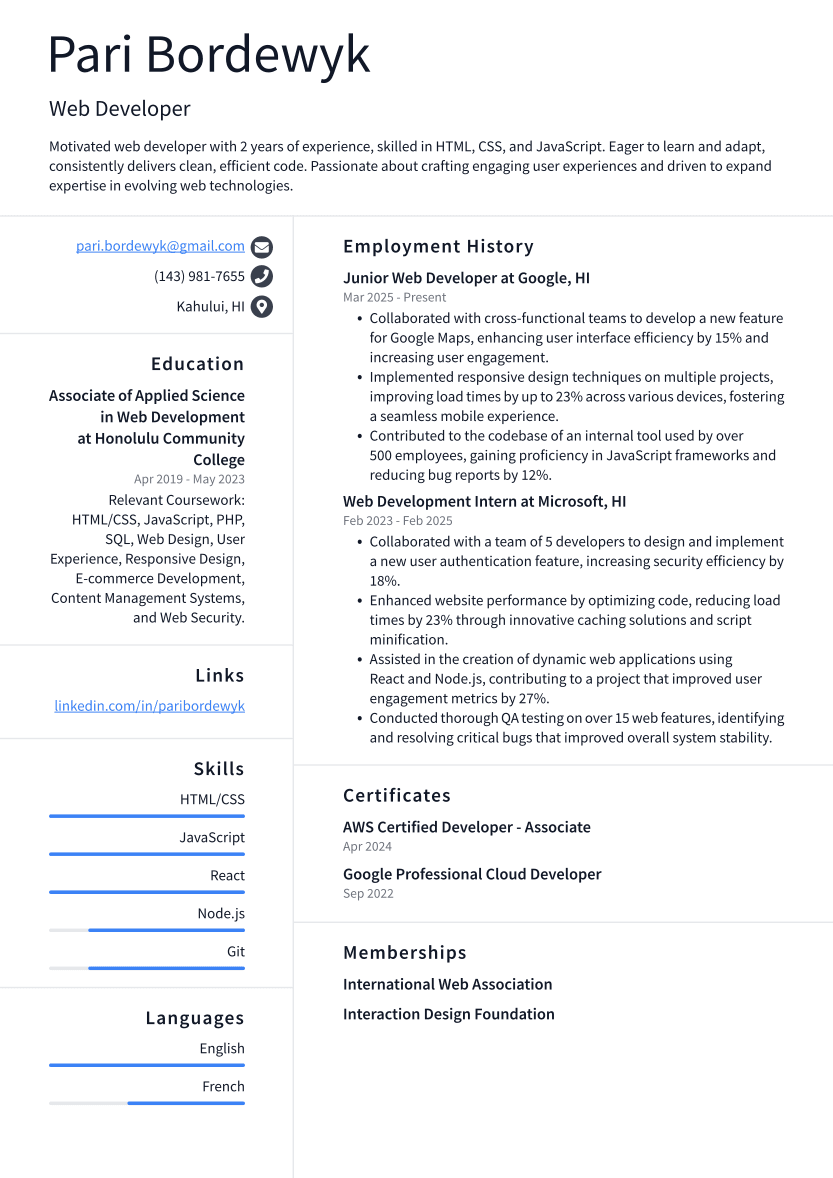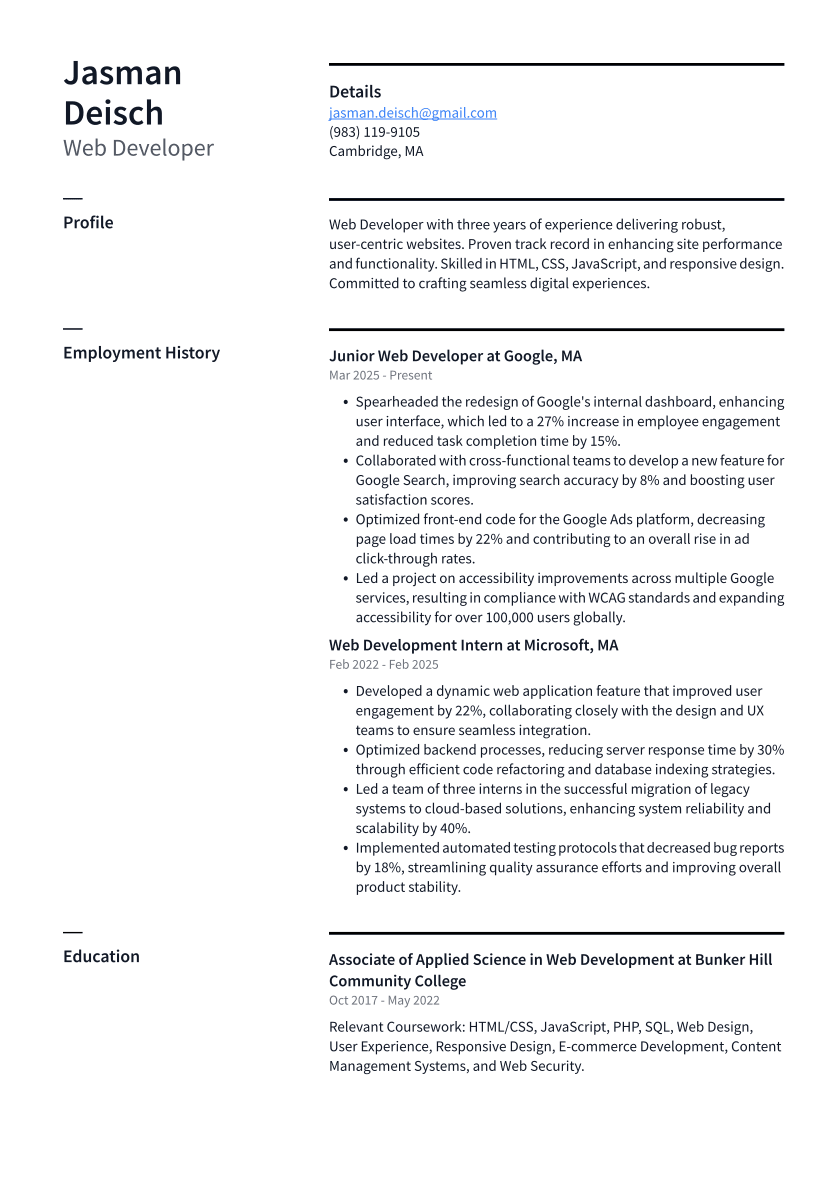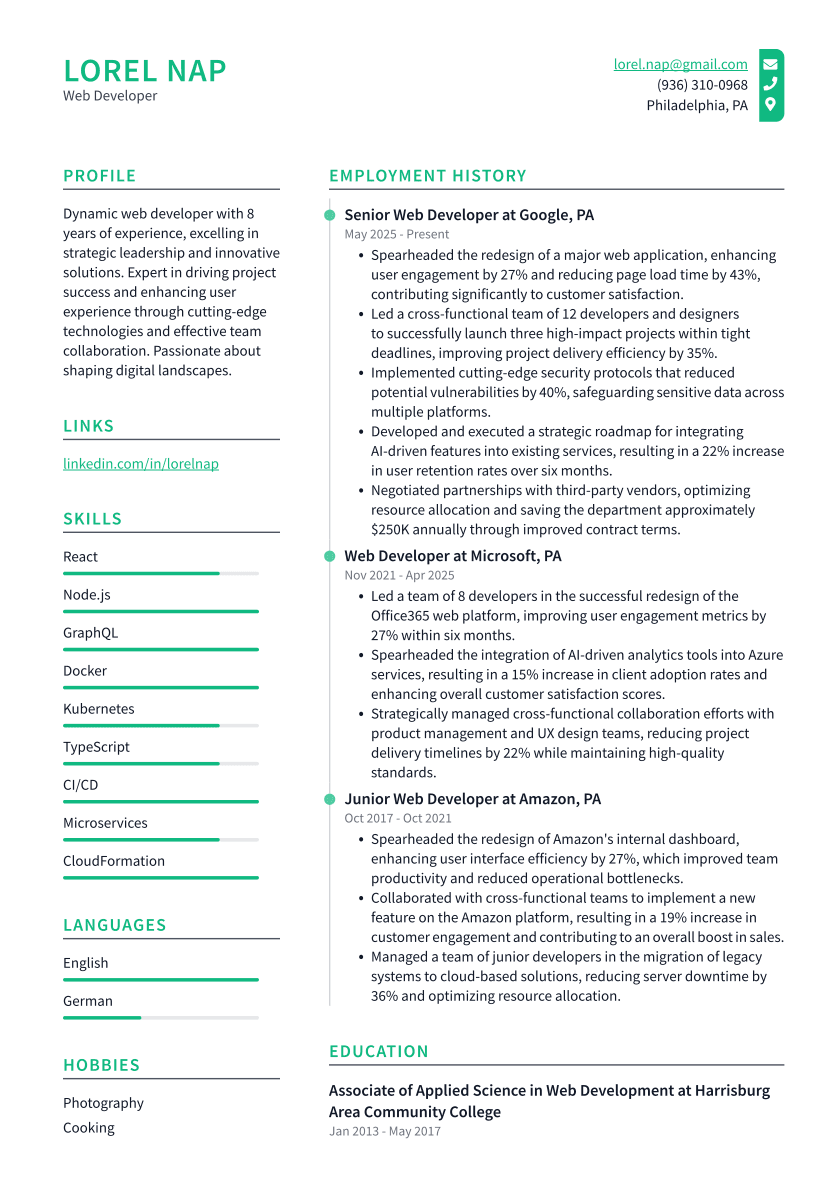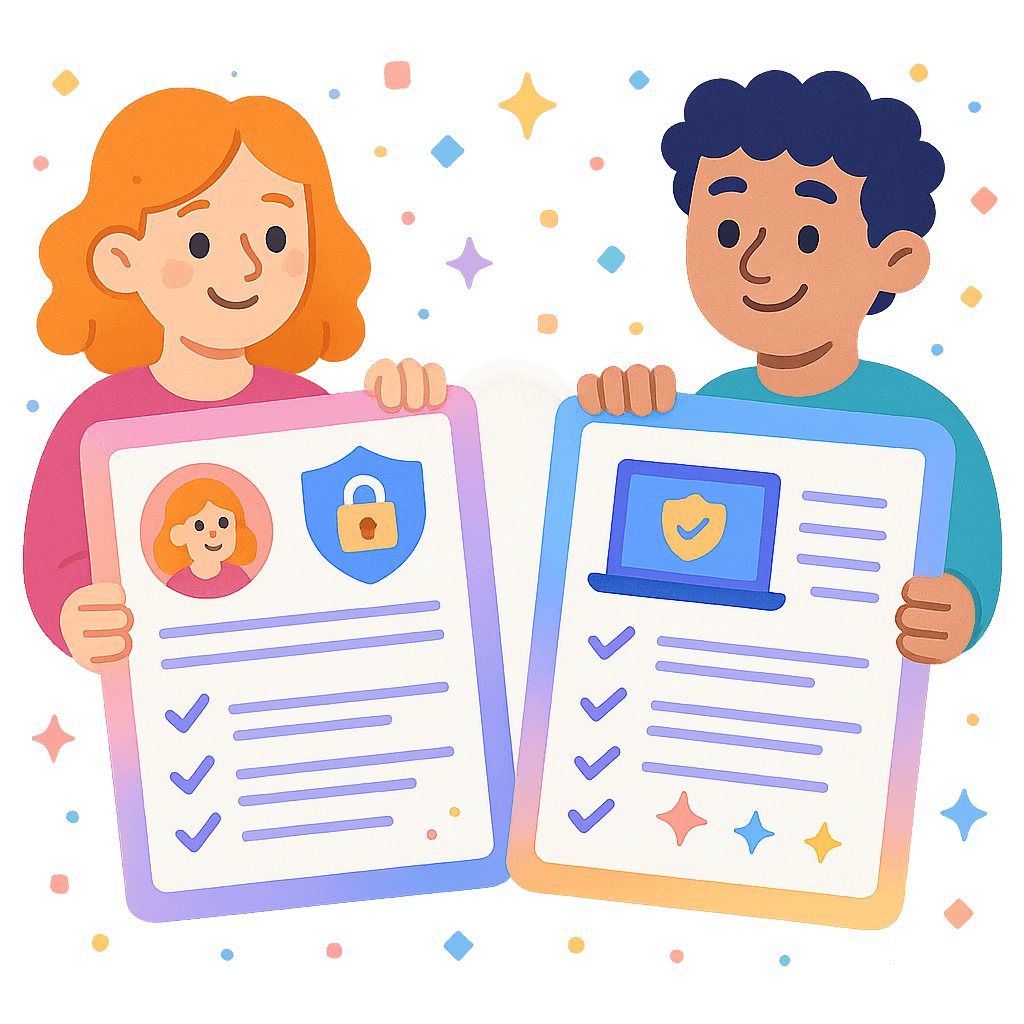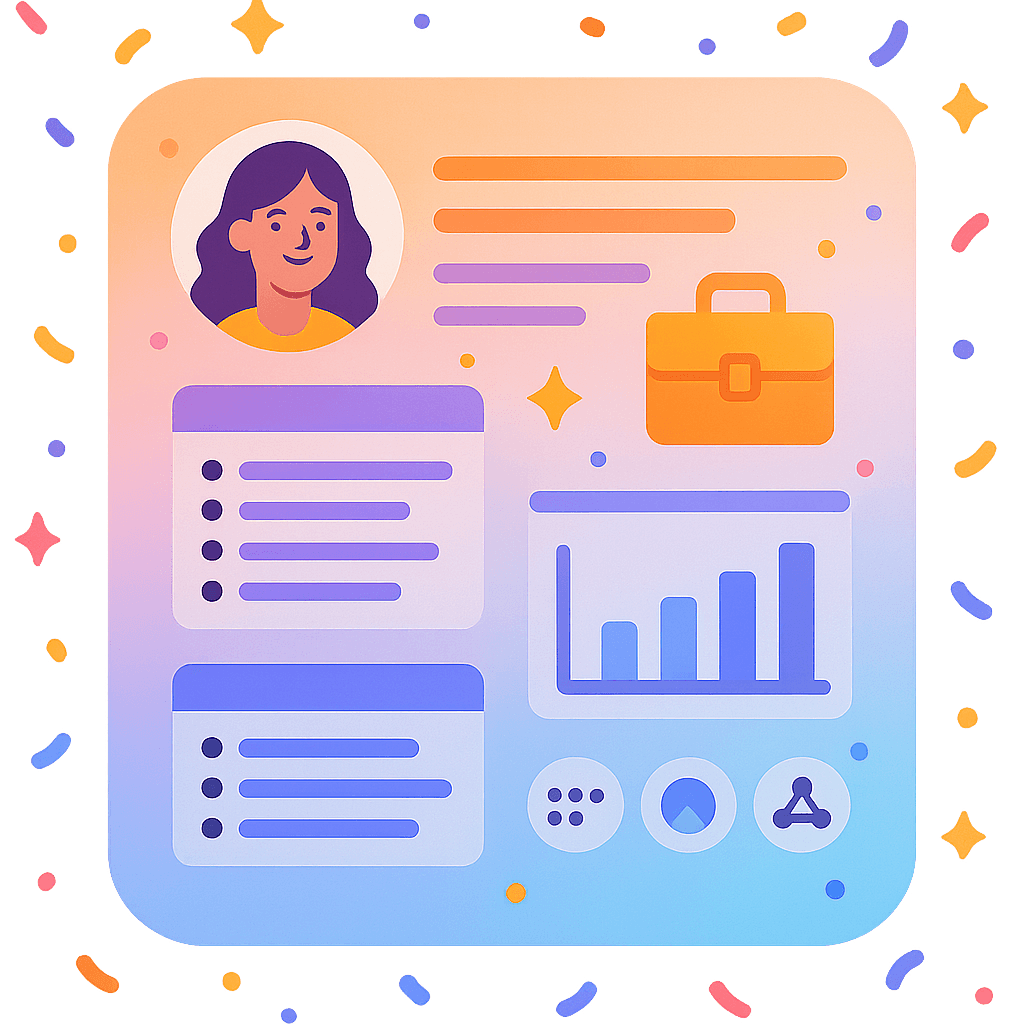Web Developer Resume Examples

Crafting an effective resume for a Web Developer gig is like debugging spaghetti code—it’s essential to untangle and highlight your skills. This article serves as your cheat sheet, unraveling the mysteries of showcasing your talents effectively. Get ready to learn how to make your resume pop like a perfectly nested div!
Building Blocks of a Web Developer Resume
- Contact Information: Essential details to reach you easily.
- Summary: Brief overview of your professional identity.
- Work Experience: Highlight relevant roles and accomplishments.
- Skills: Key technical abilities and languages mastered.
- Education: Academic background and relevant certifications.
- Projects: Showcase personal or collaborative web endeavors.
- Certifications: Additional credentials in web development areas.
- Languages: Proficiency in spoken or programming languages.
- Volunteer Experience: Relevant unpaid work enhancing your profile.
To tailor these sections to a Web Developer role, highlight projects where you've implemented responsive design techniques, showcasing your proficiency in HTML, CSS, and JavaScript frameworks. Emphasize your experience with version control systems like Git, and mention any collaborations with UX/UI designers to enhance user experience.
Pro Tip: In the tangled web of digital job applications, weaving relevant skills and keywords into your resume can be the difference between catching the eye of an ATS and getting lost in the shuffle.
Crafting an Outstanding Web Developer Resume
Showcase specific projects where you’ve increased site efficiency or user engagement, like “boosted page load speed by 40% through code optimization, resulting in a 25% increase in user retention.” Highlight collaborative efforts too, such as “developed a responsive web application with a team, leading to a 30% rise in mobile traffic and a 15% uptick in sales.”
- Whitespace and Margins: Generous use of whitespace and consistent margins enhance readability, allowing the content to breathe and making it easier for the reader to focus on key details without feeling overwhelmed.
- Consistent Font and Style: Utilize a clean, professional font like Arial or Calibri, maintaining uniformity in font size and style for headings, subheadings, and body text to guide the reader's eye seamlessly through the document.
- Visual Hierarchy with Sections: Clearly defined sections with bold headings and bullet points help organize information logically, ensuring that skills, experiences, and achievements stand out, making it simple for employers to spot important qualifications quickly.
Pro Tip: Tailoring your web developer resume for each application highlights specific skills and experiences that match the job, making you stand out to employers.
Example: Entry-Level Web Developer Resume
An entry-level web developer resume tends to focus more on relevant coursework, projects, basic skills, and internships, whereas mid-level or senior resumes emphasize extensive professional experience, advanced expertise, and leadership roles.
Example: Experienced Web Developer Resume
A mid-level Web Developer resume highlights more substantial experience and project ownership than entry-level resumes but lacks the extensive management and strategic leadership found in senior resumes.
Senior Web Developer Resume Example
A senior-level web developer resume often highlights strategic leadership experiences, complex project management, and a track record of technological innovation, whereas entry or mid-level resumes focus more on technical skills, learning experiences, and foundational projects.
Do’s, Don’ts & a Handy Checklist: Web Developer Resume Guide
DO'S
- Showcase relevant projects with links to live demos or code repositories.
- Highlight skills and technologies with measurable achievements.
- Tailor your resume for each job, using keywords from the job description.
DON'TS
- Don't overload it with irrelevant details; keep it focused on key skills and experiences.
- Don't use generic statements; showcase specific achievements and impact on projects.
- Don't forget to update technologies; ensure it's current with the latest industry trends.
CHECKLIST
- Tailor your resume for each job application, emphasizing relevant skills and experiences.
- Highlight measurable achievements to demonstrate your value and impact.
- Incorporate keywords from the job posting to pass through applicant tracking systems.
- Avoid clutter by limiting unnecessary details and focusing on pertinent information.
- Steer clear of generic templates that can make your resume blend in with the rest.
- Double-check grammar and spelling to ensure a professional presentation.
